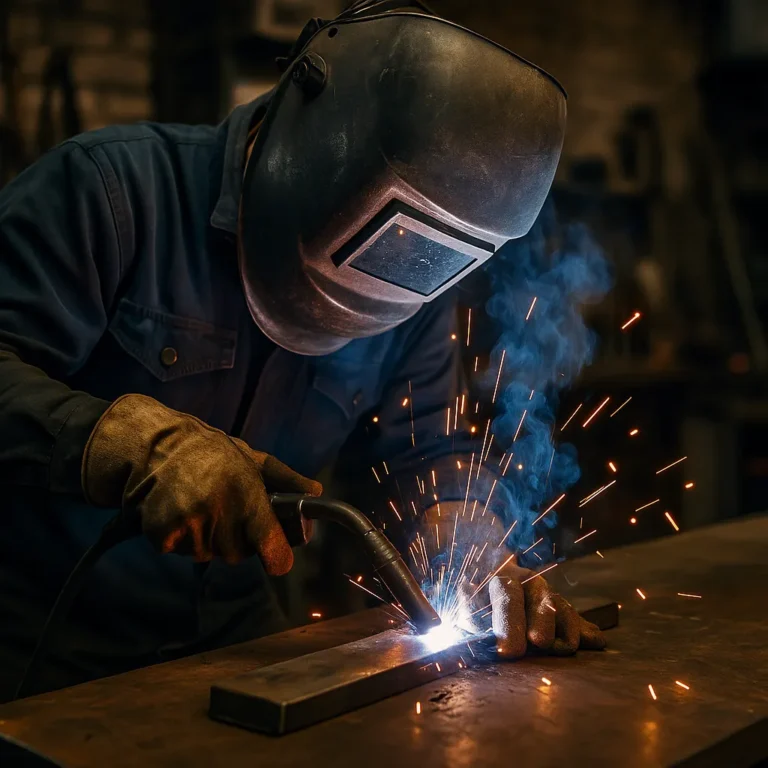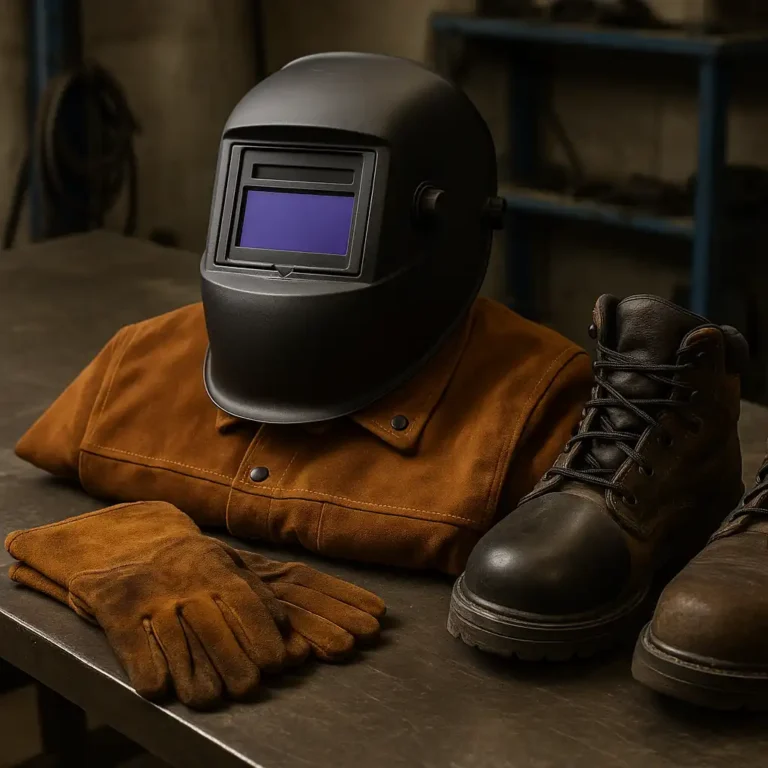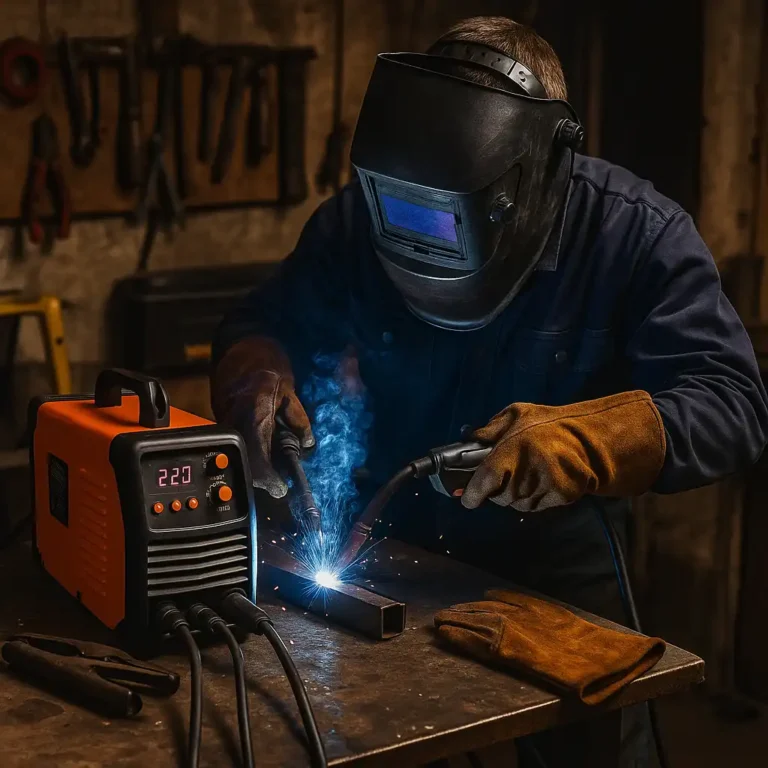What Are Welding Jackets Made Of? A Complete Guide for Welders

Disclosure: This post contains affiliate links. As an Amazon Associate, I earn from qualifying purchases—at no extra cost to you.
Last Updated: December 2025
A welding jacket is one of the simplest ways to keep yourself safe in the shop. Sparks bounce, slag drops, and radiant heat builds fast around the weld. When your jacket is made from the right material, it takes the abuse so your skin doesn’t have to. Once you’ve worked in a few different jackets, you start to notice which ones breathe, which ones stiffen up, and which ones can take real heat without breaking down.
The material matters more than most new welders expect, and picking the right one makes long days under the hood much more comfortable.
👉 For a look at the essential gear every welder should have, check out our guide to shop-ready welding PPE.
🔍 What Are Welding Jackets Made Of?
Welding jackets are built from materials that resist heat, shrug off sparks, and block UV flash. Each material behaves differently under the arc, so welders choose their jacket based on the process they run, how hot the shop gets, and how much mobility they need.
Most welding jackets are made from:
- FR cotton
- Leather
- Split cowhide
- Hybrid combinations
- Wool blends (less common today but still used in cold shops)
Each one has its strengths, and none of them fit every situation perfectly.
🔍 FR Cotton Welding Jackets
FR cotton jackets are the go-to for everyday MIG and TIG. They’re light, breathable, and flexible enough to move with you instead of fighting you through every weld.
Why FR cotton works well:
- Much cooler than leather
- Lets air circulate during long sessions
- Self-extinguishing treatment helps stop sparks from spreading
- Affordable and easy to replace when worn down
They won’t hold up to heavy Stick welding or constant overhead sparks, but for most shop work, they get the job done without overheating you.
🔍 Leather Welding Jackets
Leather is the heavy hitter of welding protection. When you’re running high amperage, throwing serious sparks, or welding overhead, leather handles the abuse without hesitation.
Why welders rely on leather:
- Excellent heat and spark resistance
- Doesn’t burn or melt
- Lasts through heavy grinding and spatter
- Ideal for Stick welding and overhead work
The downside is heat. Leather traps warmth, and in a hot shop, it can feel like wearing a furnace. Many welders rotate between leather and FR cotton depending on the job.
🔍 Split Cowhide Jackets
Split cowhide is still leather — just a softer, more flexible version. It offers serious protection without feeling quite as stiff.
Why split cowhide stands out:
- High heat resistance with better mobility
- Softer feel that breaks in quickly
- Durable enough for daily welding and grinding
- Solid middle ground between cotton and full leather
If you want leather-level protection but more comfort in the shoulders and arms, split cowhide is a strong choice.
🔍 Hybrid Welding Jackets
Hybrid jackets mix materials to keep protection where sparks hit hardest and shed heat everywhere else.
Common setups include:
- Leather sleeves with a breathable FR cotton torso
- Leather upper panels paired with lighter body fabric
- Reinforced leather zones in high-spark areas
They’re especially handy on long fabrication days when you need leather protection on your arms but can’t stand the heat of a full leather jacket.
🔍 Why Jacket Material Matters
The wrong material distracts you. Too light, and you’ll feel heat sooner than you expect. Too heavy, and you’ll be drenched before you’re halfway through the bead.
Your material choice should reflect:
- The welding process you use
- Whether you’re welding overhead
- How hot and ventilated your shop is
- How often you grind or cut near your work
- How much mobility you need for positioning
The right jacket disappears into the background and lets you work. The wrong one becomes something you constantly adjust.
🔍 How Welding Jacket Materials Handle Sparks
Here’s how each type responds under real welding conditions:
FR Cotton:
Good for everyday MIG and TIG. It chars with heavy sparks but usually self-extinguishes.
Leather / Split Cowhide:
Top-tier protection for constant sparks, hot slag, and overhead work.
Hybrid Jackets:
Leather where it counts, breathable cotton everywhere else.
Wool Blends:
Naturally flame-resistant but not widely used anymore.
📌 Key Takeaways
- Welding jackets use FR cotton, leather, split cowhide, hybrids, or wool blends
- FR cotton stays cool and flexible—great for MIG and TIG
- Leather gives the strongest protection for Stick and overhead work
- Hybrid jackets balance heat reduction with real protection
- Match the jacket material to your welding process and shop environment
🟢 FAQs
Q: Is leather the safest material for welding jackets?
For high heat, overhead work, and heavy sparks, yes. Leather holds up better than anything else.
Q: Are FR cotton jackets safe for everyday MIG work?
Absolutely. They’re comfortable, protective, and much cooler than leather in warm shops.
Q: Can welding jackets catch fire?
FR cotton is treated to self-extinguish, and leather doesn’t burn. Still, inspect your jacket regularly — worn areas can fail sooner than you think.
Q: Are hybrid jackets good for Stick welding?
They can be, as long as the sleeves are leather. Cotton torsos handle forward-facing sparks well but aren’t meant for overhead slag.
✅ Conclusion
Welding jackets are built from materials designed to handle heat, sparks, and UV exposure without breaking down under pressure. Whether you choose FR cotton for mobility, leather for full protection, or a hybrid design for all-around work, the right jacket keeps you safe and lets you stay locked in on the weld. Match the material to the job, and your jacket will take care of you shift after shift.






